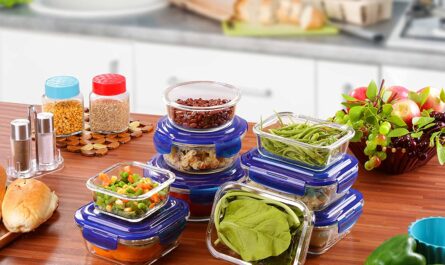With the packaging industry constantly evolving to meet the changing needs of customers and regulations, testing new and existing packaging has become increasingly crucial. Packaging serves a variety of purposes beyond just containing and transporting products – it is often the first impression a customer has of a brand. Proper testing at various stages of development and use helps ensure packaging fulfills its intended functions while staying compliant. This article explores the different types of packaging tests and how they benefit businesses.
Durability Testing
One of the core functions of Packaging Testing is to withstand the forces of transport and storage without compromising the product inside. Durability testing subjects sample packages to conditions that simulate how products may be handled during distribution. This includes stresses like impact, compression, vibration, and various climate conditions. Impact and vibration tests use specialized machines to throw or shake packages from specified heights and frequencies. Compression testing uses pressure plates or weights to assess a package’s resistance to crushing. Climate testing exposes samples to temperature extremes and humidity fluctuations over time. The goal is to identify potential weaknesses or failures before a design is finalized. Spotting durability issues at the development stage can help strengthen packaging and prevent damage, returns, and costly recalls further down the supply chain.
Barrier Property Testing
For many products, packaging serves as a barrier between the contents and external conditions like oxygen, moisture, odor, light, and bacteria. Barrier property testing evaluates how well a package material or design prevents undesirable interactions. Permeation tests measure the rate of gas or vapor transmission through a package wall. Tests for moisture vapor transmission, gas transmission, and odor transmission reveal how breathable or impermeable different materials are. Light transmission tests use photometers to determine the level of light blocking provided. Packages for food, pharmaceuticals, electronics, and chemicals require superior barrier properties to maintain freshness, potency, and meet regulatory shelf-life requirements. These tests help manufacturers select optimal packaging materials and configurations.
Usability Testing
Ease of use and human factors are increasingly important as more consumers purchase items online. Usability testing evaluates how intuitive, functional, and frictionless the consumer-packaging interaction is. This may involve cognitive walkthroughs where test users verbalize their thought process. Other common methods are observational testing where users complete typical tasks while researchers observe and heuristic evaluation where experts inspect the design against usability guidelines. Areas examined include how clearly printed information like instructions and labels are understood, how easily packaging opens, whether components like cups, lids or applicators are usable as intended, and how recyclable or reusable the system is. The goal is to surface any frustrations or potential mistakes and refine the design accordingly to enhance the user experience.
Regulatory Compliance Testing
Packaging must comply with a variety of regulations around food safety, chemicals, recycling and the environment. Compliance testing verifies packages adhere to the relevant standards. Food contact testing checks for contaminants which may migrate from the packaging into food. This includes testing for heavy metals, volatile organic compounds, extractable components, and antimicrobial properties. Chemical analysis determines levels of restricted substances like lead, cadmium, and phthalates in material components. Recycling tests examine factors like the separability of package components and whether inks and glues interfere with recycling processes. Companies also conduct comparative testing when migrating to new materials or suppliers to ensure formulations remain compliant. Failing compliance tests can result in regulatory issues, so this testing provides crucial assurance.
Sustainability Attributes
As more consumers seek environmentally preferable options, packaging firms are working to improve sustainability profiles. Life cycle assessments examine a package’s impacts throughout its lifespan from raw material sourcing through production, filling, distribution, use and end-of-life management. Key metrics include embodied carbon, water and energy usage as well as waste generation. Renewable/recycled content verification confirms percentages of plant-based, reused or remanufacture inputs. Companies also quantify how much primary packaging can be reduced through lightweighting or downgauging initiatives. Recyclability testing determines the recyclability rating by simulating real-world recycling facility processes. Documenting sustainability benefits through transparent testing and certification helps greenwash-wary customers feel confident about purchase decisions.
Accelerated Aging Testing
Real-time shelf-life studies can take months or years to complete, delaying innovation. Accelerated aging tests artificially expose packaging testing to extreme conditions to quickly identify potential defects and compress a product’s lifespan into a shorter timeframe. Common methods for consumer goods include thermal cycling where samples cycle between freezing and high heat repeatedly, UV light exposure which simulates sunlight damage, and humidity treatments combined with heat to evaluate moisture management performance. Chemically unstable materials may undergo chemical challenge tests. By validating package integrity and appearance retention after accelerated aging, companies can determine suitable shelf-lives and storage conditions upfront. This enables quicker product launches while maintaining assurance that quality and safety will endure as intended for consumers.
The complex testing outlined above covers critical areas from functionality and safety to production efficiency and sustainability. Proactive packaging evaluations guard against costly mistakes down the line while building faith in a brand. With rigorous testing programs, companies gain confidence that their packaging fulfills its protective, informative, marketing and distribution roles seamlessly both now and well into the future. This helps deliver excellent consumer experiences and generate long-term loyalty for products and the businesses that stand behind them.
*Note:
1. Source: Coherent Market Insights, Public sources, Desk research
2. We have leveraged AI tools to mine information and compile it




